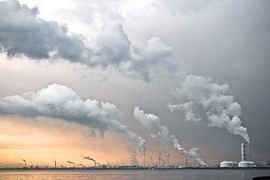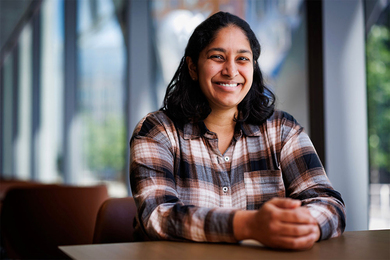Francis O’Sullivan, director of research for the MIT Energy Initiative (MITEI), recently led discussions about the future of the electric grid and clean energy technologies with leaders in industry, government, and academia at MITEI’s Associate Member Symposium. In the wake of the symposium, O’Sullivan reflects on several of its main themes: current trends in the industry, changes in customer behavior, and innovative potential responses to the challenges facing the utility industry today.
Q: There’s been a lot of talk about three current megatrends in energy: decentralization, digitalization, and decarbonization. Can you address briefly what each of these entails, and what’s driving this movement?
A: These three megatrends are deeply connected. First, broadly, people appreciate that decarbonization is critical if we are to address climate change in a meaningful way, and electricity is the sector that can be decarbonized most rapidly. Today, ever-improving economics are driving a secular expansion in the use of clean energy technologies, particularly wind and solar for power generation. Solar is especially important, because as a technology, it’s unique. It can be effectively deployed at any scale, which adds flexibility to how power systems can be designed. It also provides end users with a new option for meeting their individual energy needs. People can choose solar on an individual, house-to-house basis.
In this way, decarbonization is connected to decentralization. It’s not just individual households driving decentralization, either — in fact, commercial and industry users are now in the vanguard of distributed energy adoption. The ambition is to realize a future energy system that is cleaner, more decentralized, and has lower operating costs and higher resiliency.
This is where digitalization comes in. Having these new assets connected to the system is one thing, but you need to be able to control and coordinate them in real time if their efficiency and resiliency potential is to be fully realized.
Q: How do you see electricity customers’ behavior changing, and what does this mean for utilities?
A: Historically, consumers had very little choice in how they got their electricity. Then, starting in the ’90s, the restructuring of the energy industry and the introduction of retail choice meant that consumers gained the ability to choose from whom they bought their electricity. However, the modes of generation were still traditional ones. Today’s improved technology means people have much more choice now in terms of not just who supplies their power, but also how it is generated. There’s a subset of the public that actively seeks that greater choice. They’re interested in the environmental impact of their energy decisions. Cost-effectiveness and added resiliency are also important drivers behind this desire for greater diversity in energy services.
For the first time we now have avenues for offering electricity customers more choice. Utilities are responding to the fact that consumers want more bespoke solutions. The adoption of smart energy devices like Nest, for example, are indicative of this larger movement towards greater transparency and customer empowerment.
Q: What kind of infrastructure challenges are utilities facing now, and what kinds of emerging technologies are needed to help overcome them?
A: The age of a utility’s infrastructure and the rate of demand growth across the region it covers are normal stresses that are going to affect any system over the years. More salient at this moment in time is the need to put in place the digital infrastructure that will support the effective integration of today’s new generation and storage technologies onto the grid. In addition to offering a pathway to greater resiliency and environmental benefits, a more digitized system has the potential to unlock new commercial value and improve overall welfare if it is used to communicate more accurate price signals for services up and down the electricity value chain that are more highly resolved spatially and temporally.
There’s pressure on utilities to make these infrastructure improvements, but there’s also a tension with regulators who must ensure that these investments are just and reasonable and for the broad benefit of ratepayers. The truth is, though, that we need this new digitized infrastructure if we wish to fully realize the technical and indeed economic benefits that the power sector’s newly expanded technology toolbox can offer.







